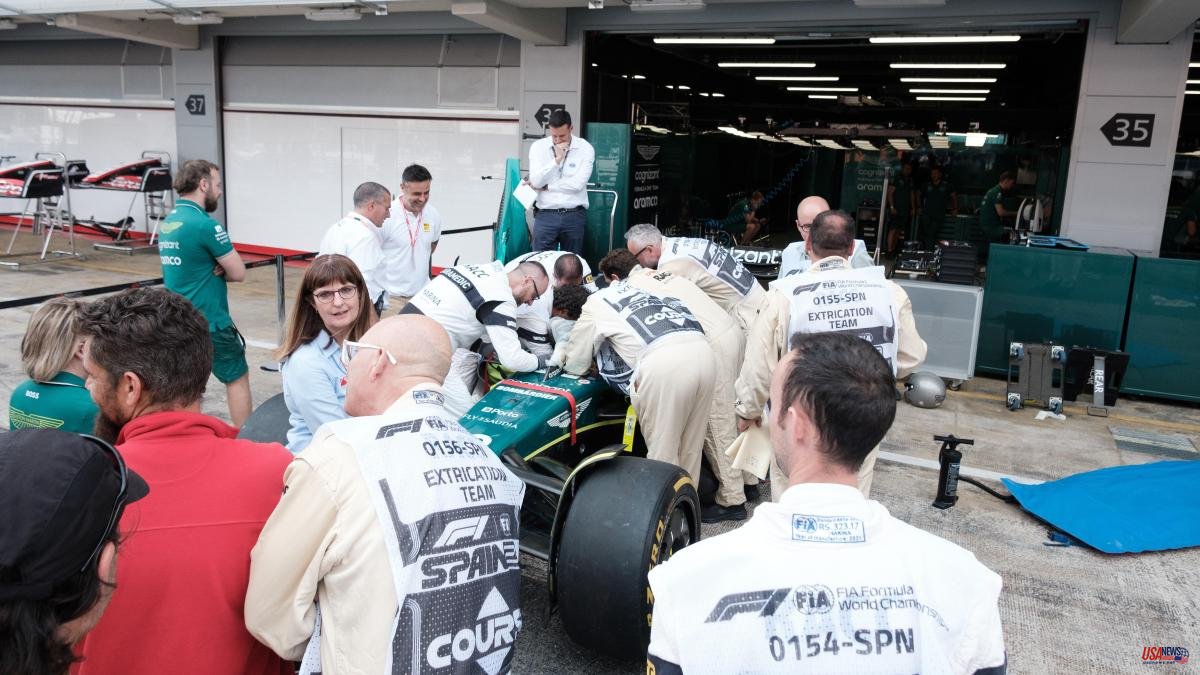In any city with 100,000 inhabitants, such as the Circuit de Barcelona during an F-1 GP, a basic service such as a hospital is essential. At the Montmeló motor temple, health care is provided by the medical center managed by the RACC. Some 70 people, including doctors –mainly anesthesiologists and traumatologists–, nurses, ambulance drivers and helicopter pilots make up the Circuit's medical team. They are the guardian angels of the pilots... and of all the residents of the compound.
“Well, the general public is served by the Red Cross in five clinics distributed throughout the circuit; For us, only if it is very serious, in cases of evacuation by helicopter, such as heart attacks, what else is there...”, details Isabel Ornaque, the Circuit's chief medical officer for 15 years (although 28 at the facility).
The care priority of the medical team, obviously, is the pilots and the F-1 staff. The most common case in which they act is track accidents. The race management doctor, Dr. Ferran Ballesteros, coordinated with Ornaque and the FIA medical delegate, visually assessed the incident -through closed circuit screens- and activated assistance. The race or training is neutralized and an S car (for rapid medical attention) arrives. If the pilot cannot get out by his own means, the firefighters, crane and extrication team (those who extract the pilot) are mobilized, with trained personnel to remove the driver without injuring him, and taking into account conditions such as the halo, “which makes extraction very difficult”, fire or electric shock by KERS. At that time, the six ambulances (two advanced and four basic) and the helicopter (with two pilots and two doctors) are ready for transfer to a hospital, Vall d'Hebron or General de Catalunya de Sant Cugat.
This is the usual protocol. But sometimes all forecast is blown up. Like the fire in the Williams box in 2013. “We had to treat 70 people in two hours, a major burn and two fractures, and multiple cases of smoke inhalation... The biggest incident we've ever had; we are not used to this”, remembers Ornaque. "But when the EMS arrived, everything was done."
On the track, the worst cases are deaths. Like that of Luis Salom in 2016 or the young Andreas Pérez in 2018. "I have experienced all the deaths in the last 18 years... It is a risky sport," the chief medical officer tries to immunize herself from pain.













